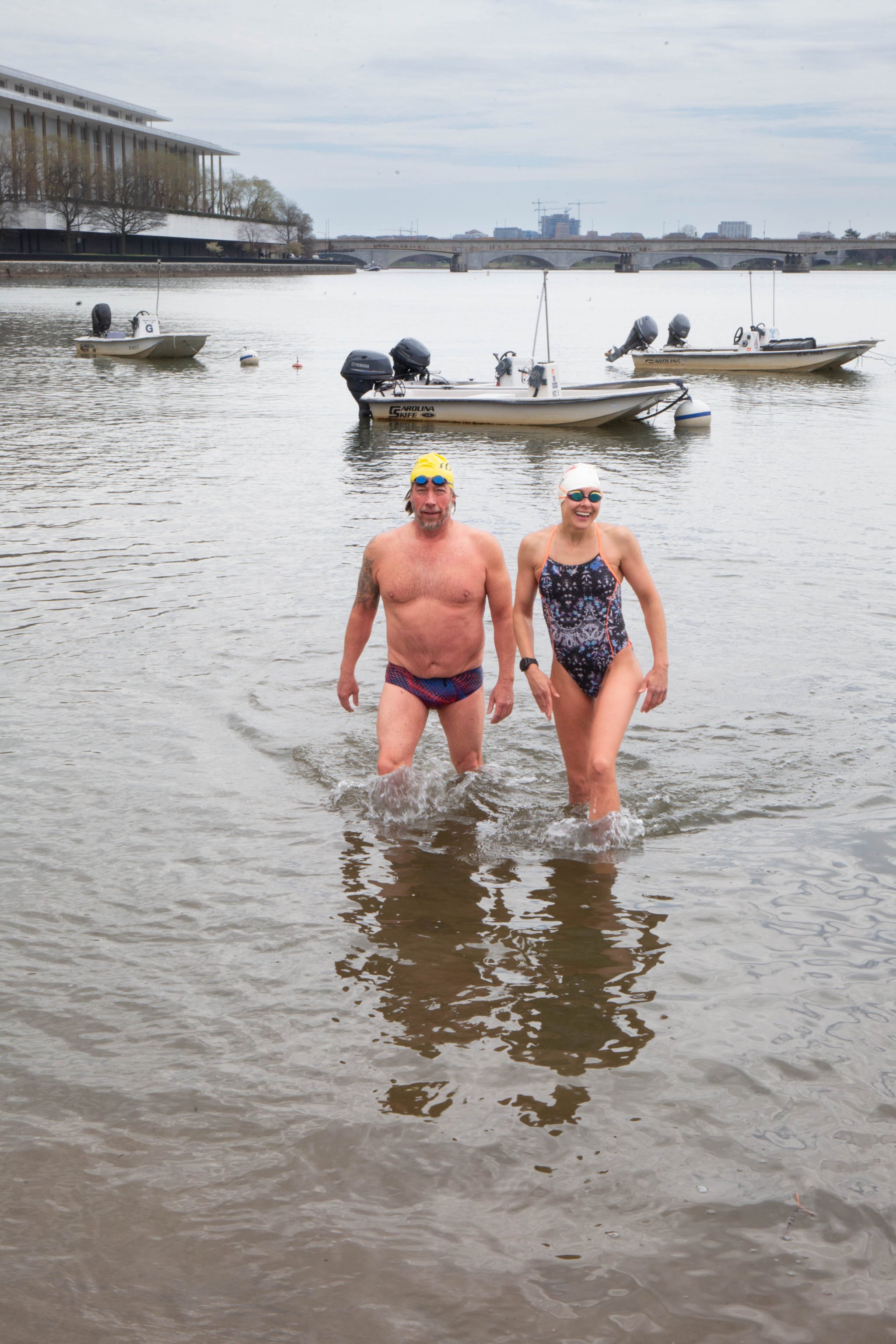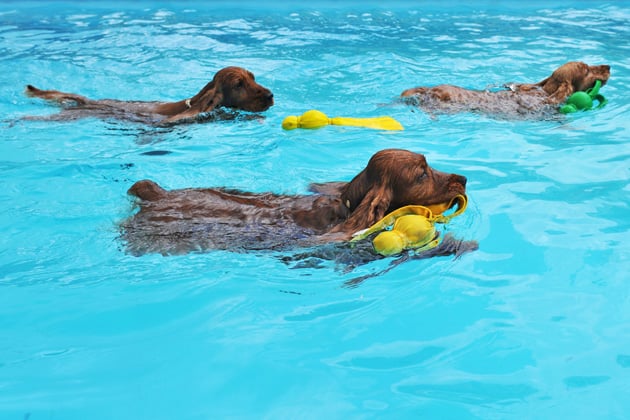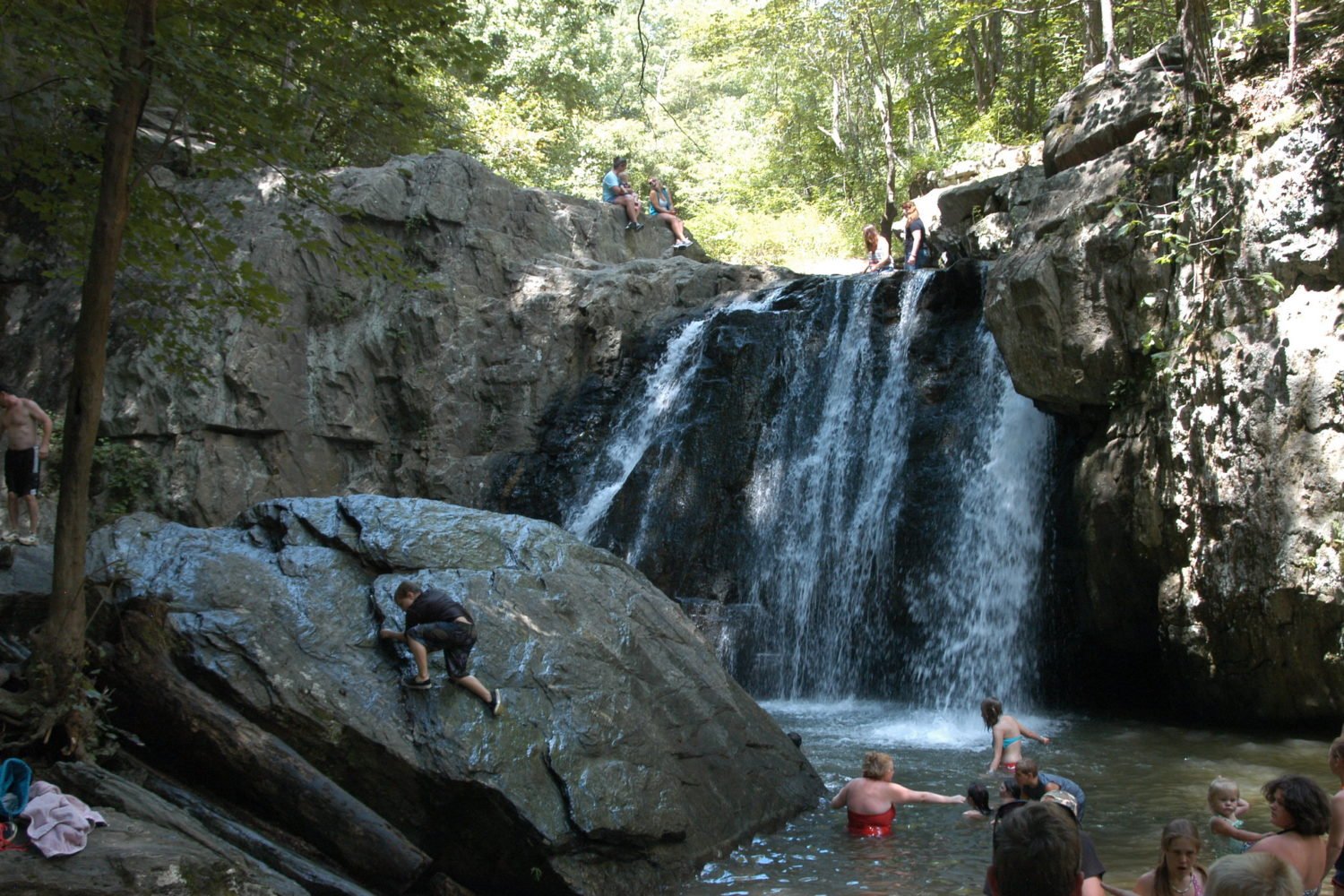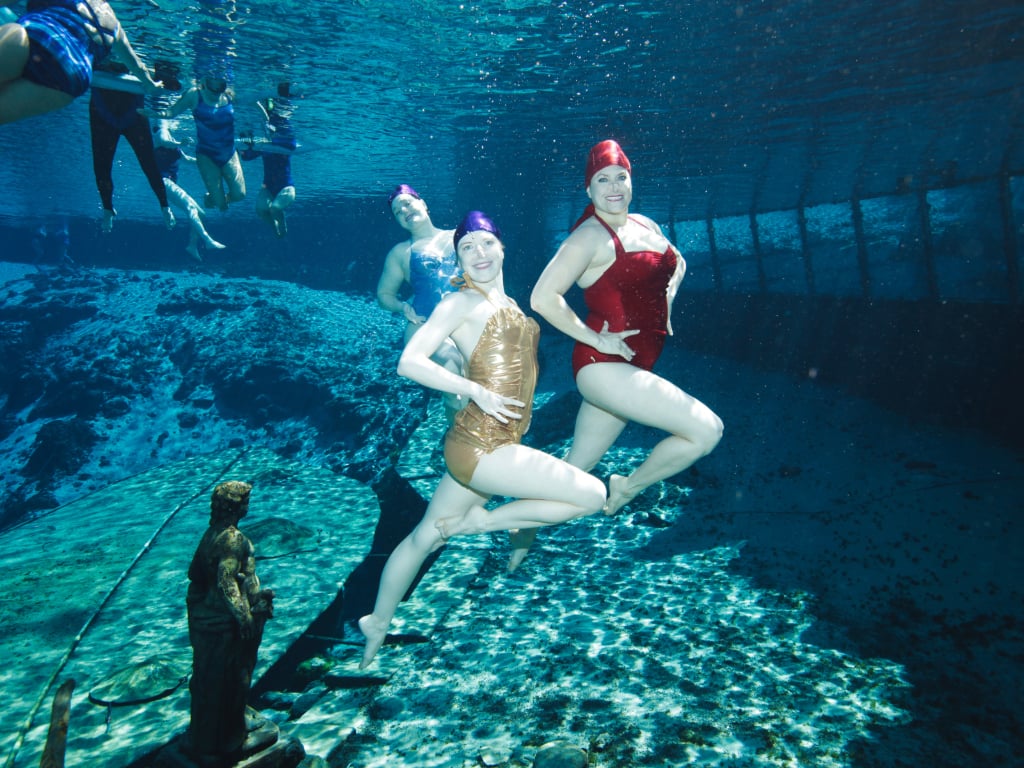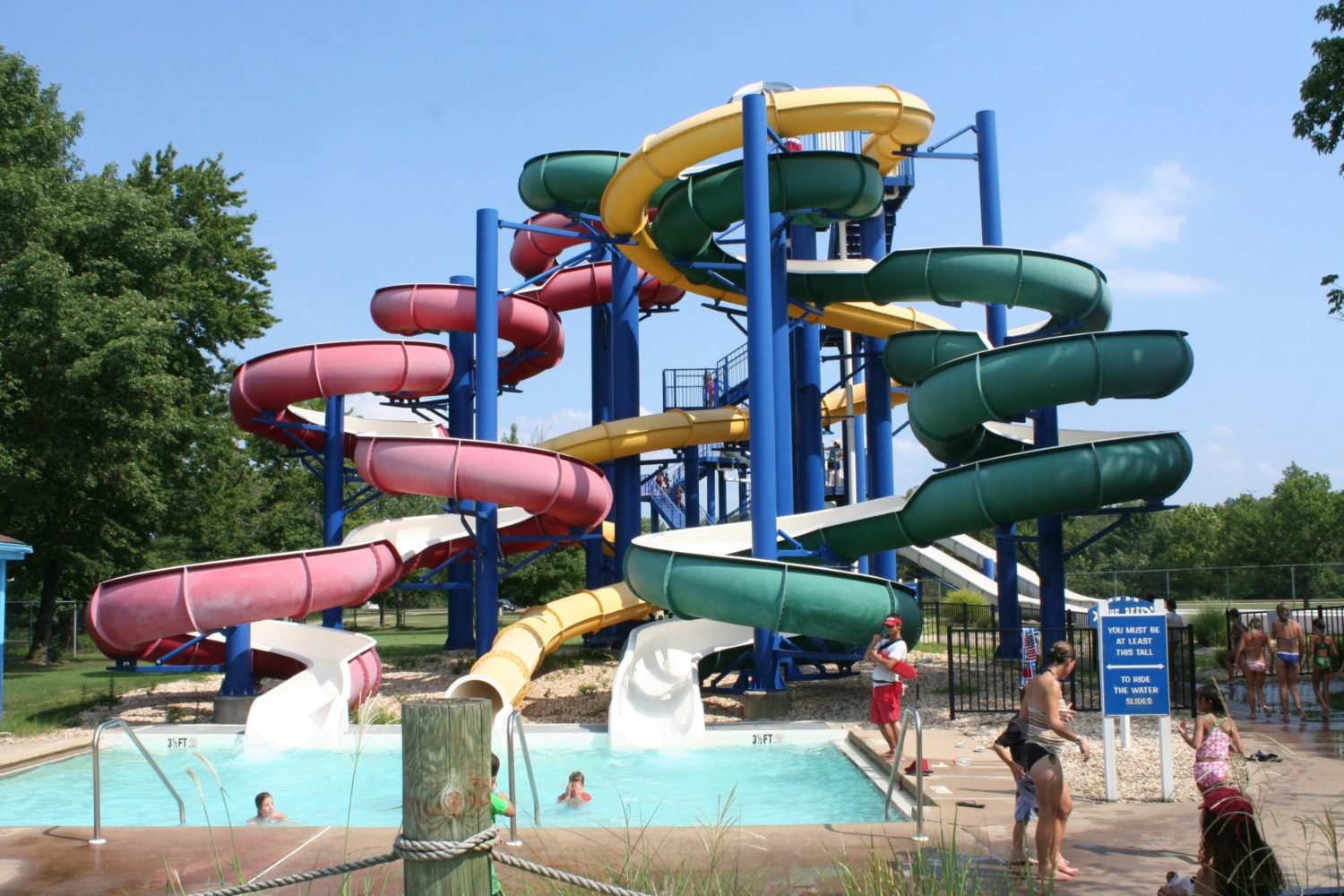Perhaps we can predict your reaction to news of an effort to lift DC’s decades-old ban on swimming in the Potomac: “Who wants to swim in the Potomac?”
Well, Denis Crean does. The founder of WaveOne Open Water Swimming can be found splashing around the river three times a week during warmer months, along with a group of about 50 other adventurous souls. They launch their river dips from National Harbor, where—because it’s just over the border in Maryland—swimming is legal. Crean also hits the water with a much smaller group during the off-season. The only time you won’t find him diving in is after a big rainfall, when runoff makes the river too dirty for human use. “It’s clean 350 days a year,” Crean says. “And it’s our home. It’s beautiful.”
No, really. Arlington’s Andie Nelson, an avid open-water swimmer who often joins Crean and WaveOne, is accustomed to raised eyebrows and skeptical jokes when she tells people about her hobby. “That’s the response: ‘Oh, have you grown another arm or leg? Ha ha, have you turned green?’ It makes me upset and makes me feel defensive, because this river has taken care of me.” Nelson says swimming in the Potomac has revived her mental and physical health after she suffered a knee injury that ended a long career as a triathlete.
Crean and Nelson are part of a growing effort to change people’s minds—and also the law. According to weekly water samples analyzed by two groups, Anacostia Riverkeeper and Potomac Riverkeeper Network, the Washington Channel is clean enough for swimming more than 80 percent of the time and the Tidal Basin more than 90 percent. Along the Anacostia, spots such as Buzzard Point and Kingman Island are swimmable more than 75 percent of the time.
That’s why clean-water advocates argue that the ban on swimming in DC’s rivers, which was instituted in 1971, is outdated; the city has invested billions in clean-water infrastructure in recent decades. “The Potomac was so polluted in the 1960s and ’70s that people who fell in had to get medical shots,” says Hedrick Belin, president of the clean-water advocacy group Potomac Conservancy. “Now we see the nation’s river coming back to life.” Activists also point out that the swimming ban is an equity issue, because boating, which is available only to people who can afford it, is allowed, while swimming, which requires only investment in a towel, is not.
Last year, Crean and another swimmer, Jim Loreto, organized a 20-mile event called the DC Marathon Swim that passed through the city limits. (He was able to get a special permit to bypass the ban.) Eighteen swimmers propelled themselves from Fletcher’s Cove in the District to Ferry Point, Virginia. “It was very moving going under Memorial Bridge and seeing the Lincoln Memorial, the Washington Monument, and then Arlington Cemetery,” says Crean. “You can’t do that anywhere else in the world.” Now he and Loreto are organizing more such events, with four already scheduled for 2022.
Recently, Crean and Nelson—who plans to swim the marathon in June—offered a taste of what the races are like, taking us down to the water at a spot in Georgetown where participants will pass by. It was a lovely place to stand, with tiny waves lapping at the bank and birds circling overhead. But to actually dive in? We weren’t really tempted—and only partly because it was an unseasonably freezing day. According to the Potomac Riverkeeper Network, this spot—along with much of Rock Creek—often fails water-quality tests and is truly safe for swimming only about 50 percent of the time.
The water looked clean enough, except for one area we walked past, which was murky and greenish-brown. Asked if he thought that patch was unsafe for swimming, Crean shrugged and shook his head. “I mean, it’s dirt,” he said. “It’s natural.”
And really, that’s the whole point of submerging yourself in a river rather than heading for a local pool. “You’re 100 percent immersed in nature, and you work your body, your mind,” Crean said. “It’s more than just swimming.”
This article appears in the May 2022 issue of Washingtonian.

